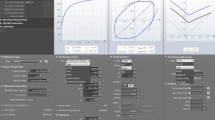Abstract
There are currently several commercial Finite Element Analysis (FEA) softwares available, and it is not clear for a company the differences between them, mostly in terms of results accuracy, reliability and usability. International conferences were created to promote a world-class forum in which, simulation engineers and automakers, can exchange their knowledge in the sheet metal forming field and evaluate stamping simulation softwares, through benchmarking exercises. However, a comparison of FEA tools based in such methodology is not truly reliable, since each participant can choose its own strategy to build the numerical model based on the experimental data delivered. In this study, the authors use a different approach to achieve a more reasonable and fair comparison between three different sheet metal forming FEA tools: AUTOFORM R5.2, PAM-STAMP 2G 2012.2 and DD3IMP. Although the existence of substantial differences in the Finite Element (FE) formulations and element types, the material laws and process parameters adopted were kept as close as possible, making the constitutive models essentially identical. This benchmark was carried out using the Numisheet 2008 Benchmark #2, which is well specified and for which there are a set of experimental results available. The numerical results and experimental results were compared in terms of: punch forces, draw-in, principal strains, formability, geometry after springback and computational cost. The usage of equivalent constitutive models shows that the accuracy of the FEA tools are roughly the same. This study also highlights the true meaning of the differences between the numerical results in the industrial competitiveness of a company.































Similar content being viewed by others
References
Banabic D (2010). Sheet metal forming processes: constitutive modelling and numerical simulation, 1st ed. Springer, New York. ISBN: 978-3-540-88112-4, pp. 21-25, 45-52. https://doi.org/10.1007/978-3-540-88113-1
Tang SC, Ilankamban R, Ling P (1988) A finite element modeling of the stretch-draw forming process. SAE Technical Paper 880527. https://doi.org/10.4271/880527
Honecker A, Mattiasson K (1989) Finite element procedures for 3D sheet forming simulation. In: Thompson EG, Wood RD, Zienkiewicz OC, Samuelsson A (eds) NUMIFORM’89. AA Balkema, Sophia Antipolis
Lenard JG, Schey JA (2002) Metal forming science and practice: a state-of-the-art volume in honour of Professor J.A. Schey’s 80th Birthday. In: Lenard JG (ed) Numerical simulation of sheet metal. Elsevier Science Ltd, Amsterdam, pp 143
Cazacu O, Barlat F (2001) Generalization of Drucker’s yield criterion in orthotropy. Math Mech Solids 6(6):613–630. https://doi.org/10.1177/108128650100600603
Banabic D, Kuwabara T, Balan T, Comsa DS, Julean D (2003) Non-quadratic yield criterion for orthotropic sheet metals under plane-stress conditions. Proceedings of the 7th Conference ‘TPR2000’. Cluj Napoca, Romania, pp 217–224
Aretz H, Barlat F (2004) General orthotropic yield function based on linear stress deviator transformations. In: Ghosh S, Castro GC, Lee JK (eds) Materials processing and design: modelling, simulation and applications. Proceedings of the NUMIFORM 2004 Conference, Columbus, O. H., pp 147–151
Banabic D, Aretz H, Comsa DS, Paraianu L (2005) An improved analytical description of orthotropy in metallic sheets. Int J Plast 21(3):493–512. https://doi.org/10.1016/j.ijplas.2004.04.003
Vegter D, van den Boogaard AH (2006) A plane stress yield function for anisotropic sheet material by interpolation of biaxial stress states. Int J Plast 22(3):557–580. https://doi.org/10.1016/j.ijplas.2005.04.009
Comsa DS, Banabic D (2008) Plane-stress yield criterion for highly-anisotropic sheet metals. In: Hora P (ed) Proceedings of the 7th International Conference and Workshop on Numerical Simulation of 3D Sheet Metal Forming Processes, NUMISHEET 2008, Interlaken, Switzerland, pp 43–48
Hillmann M, Kubli W (2009) Method for designing a tool for deep drawing and tool for deep drawing of sheet metal. US patent 7623939 B2, 24 Nov 2009
Kubli W, Krainer A (2012) Method and computing system for designing a sheet-metal-forming process. US patent 20120123579 A1, 17 May 2012
Kubli W, Krainer A (2013) Method and system for processing and displaying sheet-metal-forming simulation parameters. US patent 8478572 B2, 2 Jul 2013
Kubli W, Krainer A (2013) Method and computing system for designing a sheet-metal-forming process. US patent 8560103 B2, 15 Oct 2013
Roll K, Wiegand K, Hora P, Manopulo N, Clausmeyer T (2008) Benchmark 2 – influence of drawbeads on the springback behavior («S-Rail») part b: benchmark analysis. In: Proceeding of the 7th International Conference and Workshop on Numerical Simulation of 3d Sheet Metal Forming Processes, Interlaken, Switzerland
Hora P, Peters P, Manopulo N, Gorji M (2015) Challenges in the accurate modeling of sheet metal forming processes. In: Proceedings of 8th Forming Technology Forum Zurich 2015 – Advanced Constitutive Models in Sheet Metal Forming
Roll K, Wiegand K, Hora P (2008) Benchmark 2 – influence of drawbeads on the springback behavior («S-Rail») part a: physical tryout report. In: Proceeding of the 7th International Conference and Workshop on Numerical Simulation of 3d Sheet Metal Forming Processes, Interlaken, Switzerland
Padmanabhan R, Oliveira MC, Alves JL, Menezes LF (2007) Influence of process parameters on the deep drawing of stainless steel. Finite Elem Anal Des 43(14):1062–1067. https://doi.org/10.1016/j.finel.2007.06.011
Walker SV, Leine RI (2016) Modeling and numerical simulation of anisotropic dry friction with nonconvex friction force reservoir. In: Proceedings of the 4th joint of international conference on multibody system dynamics, Montréal
Trzepieciński T, Lemu H (2011) Investigation of anisotropy problems in sheet metal forming using finite element method. Int J Mater Form 4(4):357–369. https://doi.org/10.1007/s12289-010-0994-7
Lemu H, Trzepieciński T (2013) Numerical and experimental study of frictional behavior in bending under tension test. J Mech Eng 59(1):41–49. https://doi.org/10.5545/sv-jme.2012.383
Trzepieciński T, Bazan A, Lemu H (2015) Frictional characteristics of steel sheets used in automotive industry. Int J Automot Technol 16(5):849–863. https://doi.org/10.1007/s12239-015-0087-1
Funding
This study was funded by SFRH/BDE/51189/2010.
Author information
Authors and Affiliations
Corresponding author
Ethics declarations
Conflict of interest
The authors declare that they have no conflict of interest.
Rights and permissions
About this article
Cite this article
Pimentel, A.M.F., de Carvalho Martins Alves, J.L., de Seabra Merendeiro, N.M. et al. Comprehensive benchmark study of commercial sheet metal forming simulation softwares used in the automotive industry. Int J Mater Form 11, 879–899 (2018). https://doi.org/10.1007/s12289-018-1397-4
Received:
Accepted:
Published:
Issue Date:
DOI: https://doi.org/10.1007/s12289-018-1397-4




